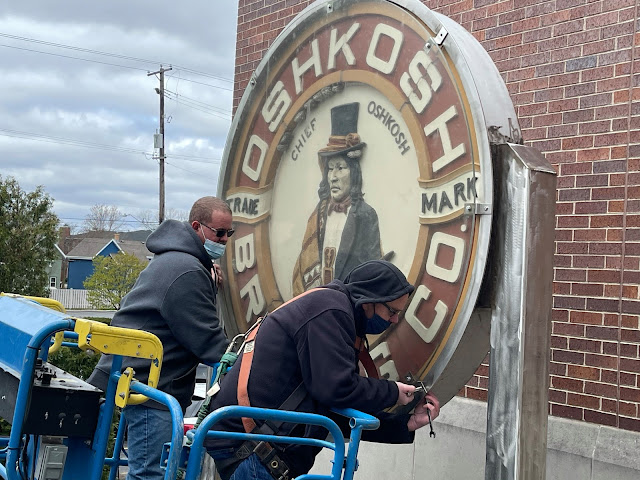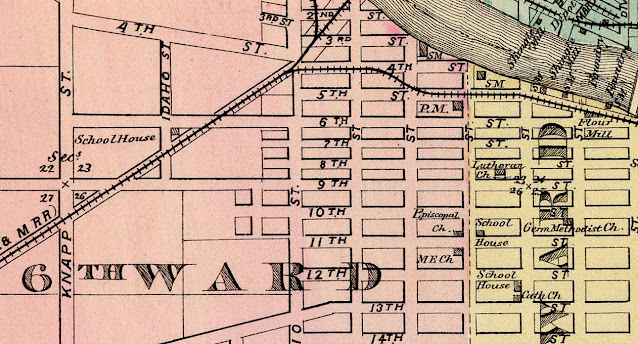Three years ago, Omega Brewing Experience opened its taproom at 115 East Main Street in Omro. In celebration of that anniversary, the brewery is releasing a series of special release beers throughout April. This weekend, the little brewery in Omro is going big.
 |
| The Omega taproom in Omro. |
When the taproom opens Friday, the heaviest hitter on the list will be Clearly Ambiguous, a 12% ABV barleywine aged in a rye whiskey barrel. Next in line is Westhaven XII, an 11.8% Belgian quad that Omega owner and head brewer Steve Zink says was inspired by the famous Trappist ale Westvleteren XII.
“I’m still keeping things balanced, though,” says Zink. “We’ll have beers and seltzers ranging from 4% to your 12%.”
 |
| The current taplist at Omega (click to enlarge). |
Omega opened in 2018 as Winnebago County’s first nano-brewery – a designation applied to breweries that produce beer in batch sizes of three barrels or less. The first beers went on tap in Oshkosh at the Chalice Restaurant and Pilora’s Cafe in early 2018. The Omega taproom opened in April that year. And in the time since, Omega has carved out a comfortable niche as Omro’s sole brewery. It has developed into one of the more unique beer destinations in the state.
Both the brewery and taproom coexist in the same space. When you’re sitting in the taproom, you are also sitting in the brewery proper. “We don’t have a lot of extra space, so we have to do everything right here,” says Zink.
 |
| Omega's barrel-aging rack doing double duty as a taproom counter top. |
Beyond the back door is another world entirely. The taproom exits onto a deck that ushers you to a gentle slope of lawn that meets the Fox River. It's all part of the taproom property and includes park benches and boat docking. It's become a popular spot for Omega customers to picnic with a couple of beers.
 |
| The beer garden. |
Built in 1927, what is now the Omega taproom was initially Anton Bang's Meat Market. Since purchasing the property in 2016, Zink and his wife Kathy have transformed the building inside and out. “Every wall has been taken down, and the floors taken up. We cleared this place out and entirely redesigned it,” Zink says.
 |
| 2017, pre-restoration. |
 |
| During the interior remodel in 2017. |
 |
| Steve and Kathy Zink behind the bar in the Omega taproom. |
The brewery has been a family affair from the start. It began as an outgrowth of the homebrewing Zink was doing with his son Eric and son-in-law Cory Tellock. It continues to be a family brewery in the truest sense with Zink's daughter Becca Tellock now part of the brewing team. "Our lead-assistant brewer is Becca," Zink says. "She works on most, but not all of the brews. She also has a background in the sciences and biology that will help in the future as we refine our water treatment, process controls, and yeast program."
The output has been prolific. Since its opening, Omega has released 60 unique beers, including a number of sour beers and hard seltzers. And though, the output has been wide-ranging, it is still very much a nano-brewery with Zink's 40-gallon, glycol-chilled, fermenters sharing space with patrons.
Like most small breweries, Omega was hit hard by the Pandemic, but the rhythm now seems to have returned. "We're back to running at full capacity," Zink says. "Right now, our number-one challenge, due to the size of our brewing system, is keeping up with demand."
This month will offer the full range of what this small brewery is capable of. Updates on new releases for the April anniversary celebration will be posted to
the brewery's Facebook page. The Omega taproom is open on Fridays and Saturdays beginning at 4 p.m.


































